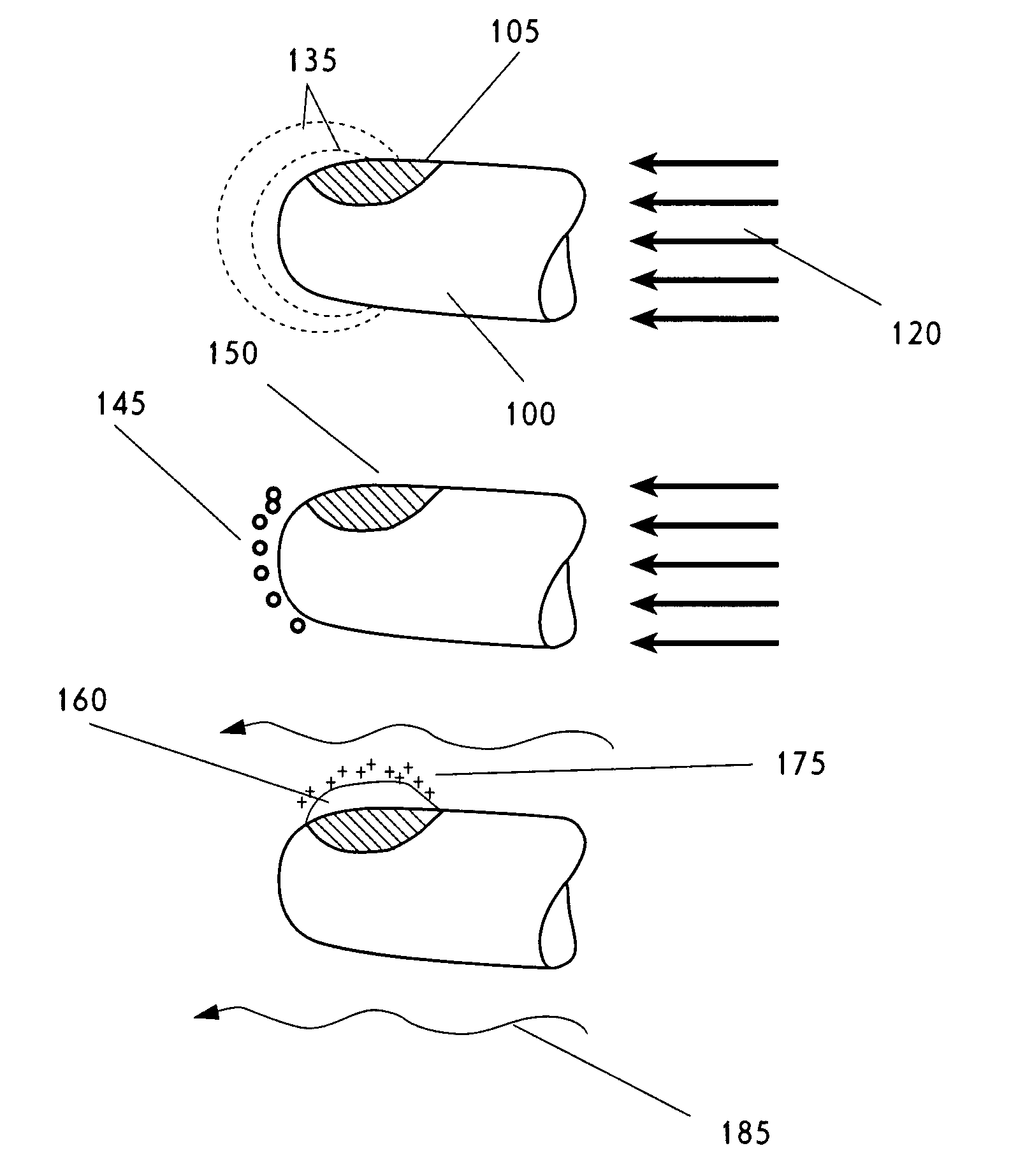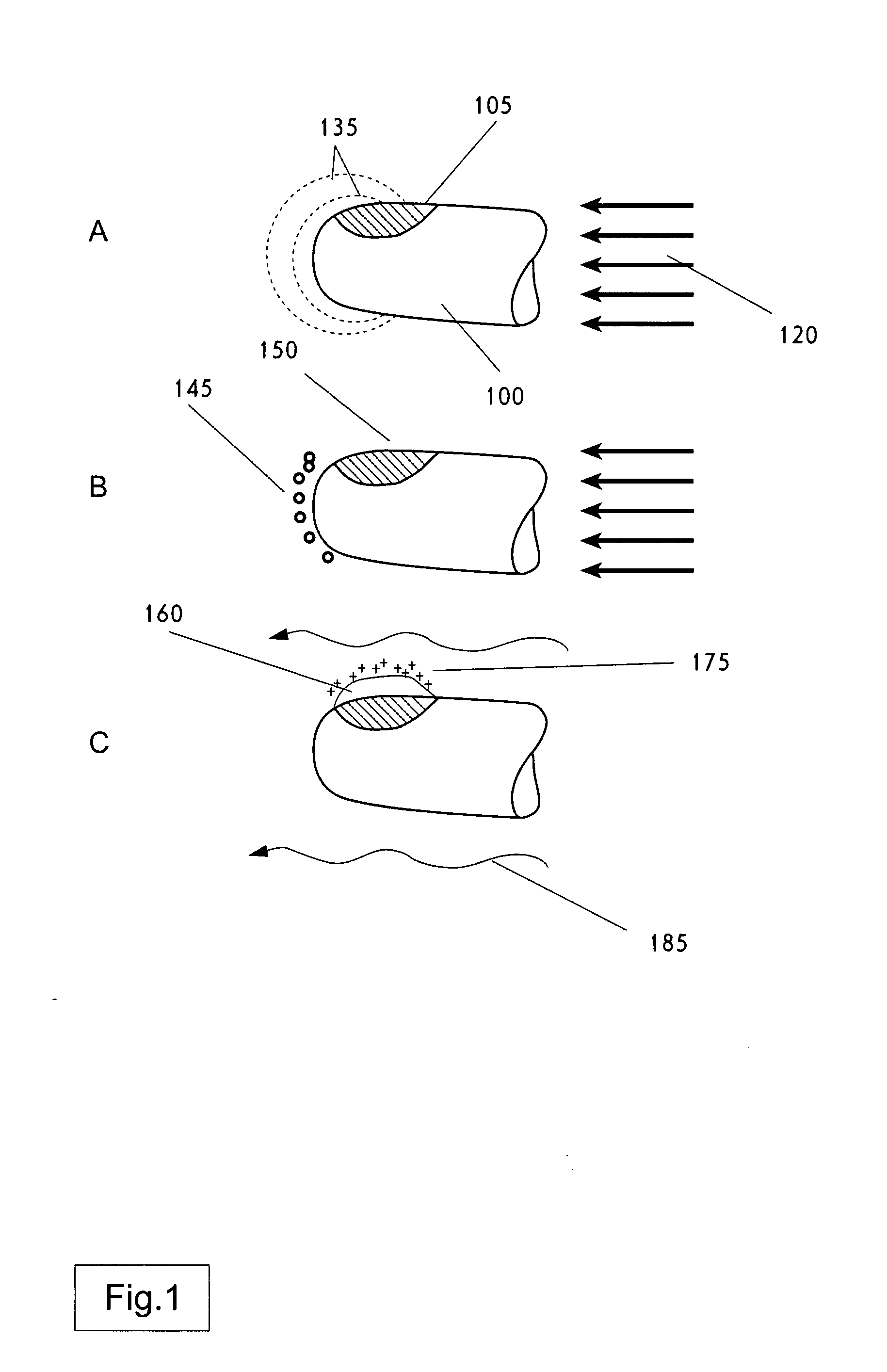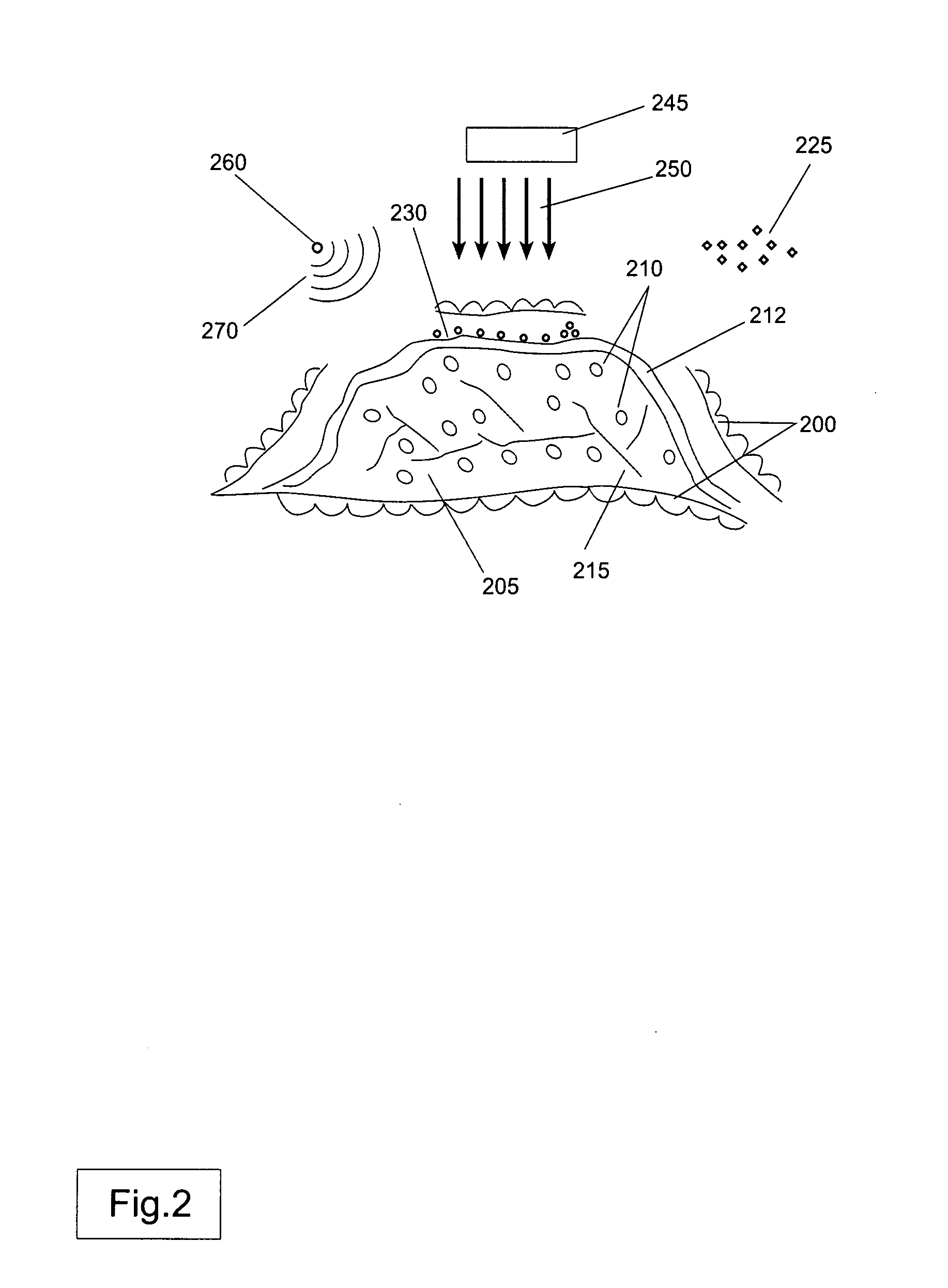Nucleation in liquid, methods of use thereof and methods of generation thereof
a technology of nucleation and liquid, applied in the field of nucleation bubbles, can solve the problem that the background art does not teach or suggest a method for generating microbubbles
- Summary
- Abstract
- Description
- Claims
- Application Information
AI Technical Summary
Benefits of technology
Problems solved by technology
Method used
Image
Examples
example 1
[0400]Particles comprising 0.1 Pico liter of saturated liquid under 0.12 MPaa at 37 C without voids are provided. The carrying structure is designed for rupture at nominal Pmax=0.1 MPad. The particles are co-administered with nanoparticles as above to the vasculature system of a targeted region. The targeted region is heated according to the procedure described in example 1 to 42 C. At that temperature, the liquid pressure within the particle jumps to 0.165 MPa.sub.a, thereby increasing Pmax to 0.12 MPa.sub.d at the rarefaction phase, resulting in particle rupture probability near 100%
example 2
[0401]Particles comprising 0.1 Pico liter of a liquid whose pressure at 37 C is 0.1 MPa.sub.a and nanoclusters as described above. The liquid comprises a small amount of dissolved fluorocarbon compound whose boiling point is −2 C. The particle carrying structure is designed for rupture at nominal P.sub.max=0.1 MPa.sub.d. The elastic coefficient of the encapsulating material for the carrying structure shell is 70 MPa and the shell thickness is 1 micron. The particle is exposed to the ultrasound and light radiation described above. Under these conditions, at least one microbubble is formed around one nanocluster. In turn, the microbubble grows by rectified diffusion of the volatile fluorocarbon compound, to 1 micron diameter and in turn increases the composition pressure to 0.165 MPa.sub.a. In turn, P.sub.max would reach 0.12 MPa.sub.d resulting in particle rupture probability near 100%.
example 3
[0402]One or more particles comprising 0.1 Pico liter of saturated liquid described in example 1 are administered to an arteriole whose diameter is 36 microns. Nanoparticles described above are co-administered to the region surrounding the arteriole. The region is exposed to the procedure described above, thereby heating the blood in the arteriole to 42 C. Each particle is heated by the surrounding blood to 42 C and rupture as described in example 1 thereby releasing a gas bubble which occupies a cylindrical volume of 36 micron diameter by 75 mm long. One or more gas bubbles are generated in the arteriole, until one of them is wedged in the arteriole. Such a bubble configuration effectively occludes the arteriole and prevents blood flow through it.
PUM
 Login to View More
Login to View More Abstract
Description
Claims
Application Information
 Login to View More
Login to View More - R&D
- Intellectual Property
- Life Sciences
- Materials
- Tech Scout
- Unparalleled Data Quality
- Higher Quality Content
- 60% Fewer Hallucinations
Browse by: Latest US Patents, China's latest patents, Technical Efficacy Thesaurus, Application Domain, Technology Topic, Popular Technical Reports.
© 2025 PatSnap. All rights reserved.Legal|Privacy policy|Modern Slavery Act Transparency Statement|Sitemap|About US| Contact US: help@patsnap.com



